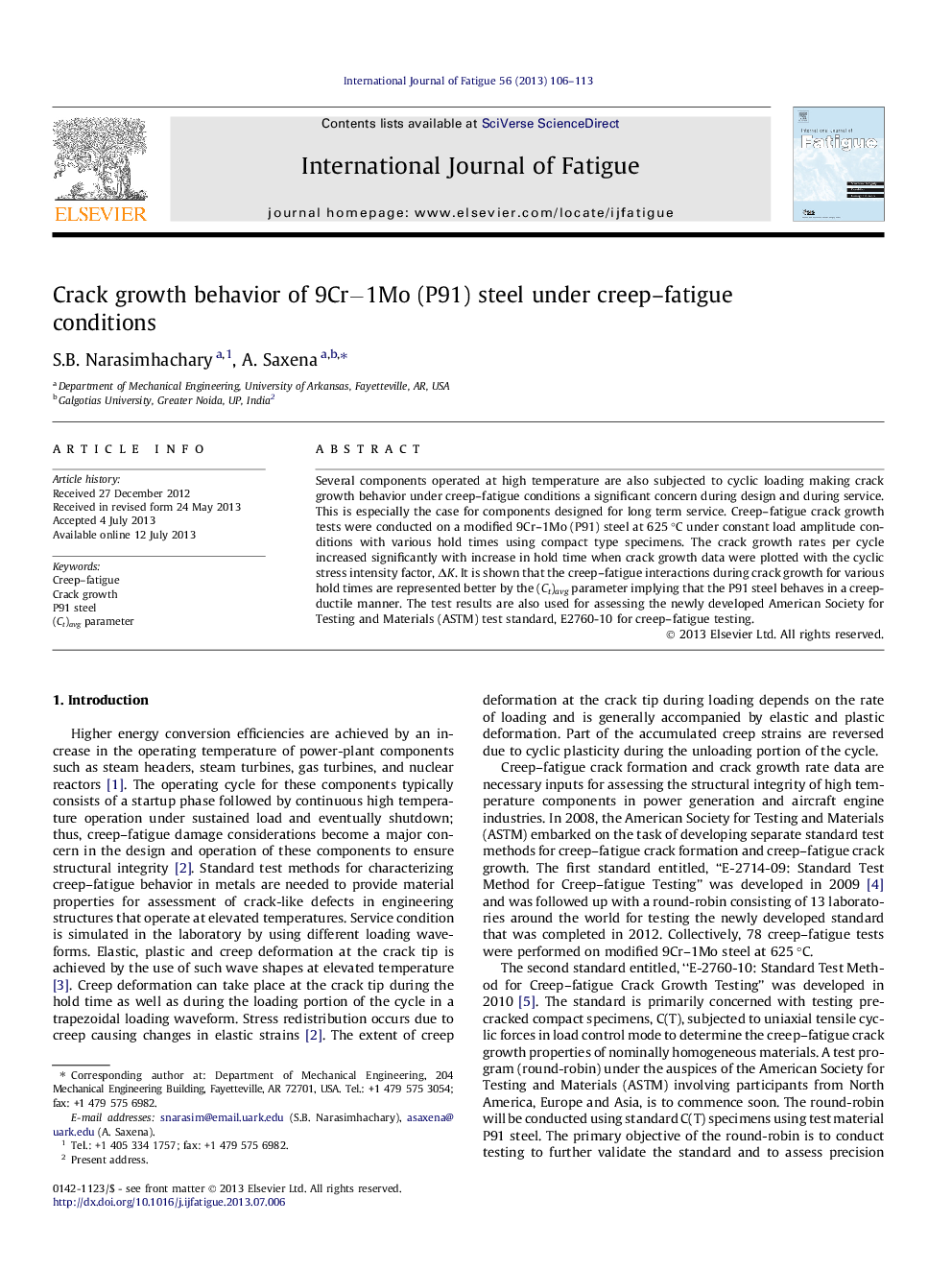| Article ID | Journal | Published Year | Pages | File Type |
|---|---|---|---|---|
| 777668 | International Journal of Fatigue | 2013 | 8 Pages |
•Creep fatigue crack growth test were conducted on 9Cr–1Mo (P91) steel.•P91 steel behaves in a creep-ductile manner.•Creep–fatigue crack growth data are represented better by the (Ct)avg parameter.•The test results are used for assessing ASTM E2760-10 for creep–fatigue testing.
Several components operated at high temperature are also subjected to cyclic loading making crack growth behavior under creep–fatigue conditions a significant concern during design and during service. This is especially the case for components designed for long term service. Creep–fatigue crack growth tests were conducted on a modified 9Cr–1Mo (P91) steel at 625 °C under constant load amplitude conditions with various hold times using compact type specimens. The crack growth rates per cycle increased significantly with increase in hold time when crack growth data were plotted with the cyclic stress intensity factor, ΔK. It is shown that the creep–fatigue interactions during crack growth for various hold times are represented better by the (Ct)avg parameter implying that the P91 steel behaves in a creep-ductile manner. The test results are also used for assessing the newly developed American Society for Testing and Materials (ASTM) test standard, E2760-10 for creep–fatigue testing.
